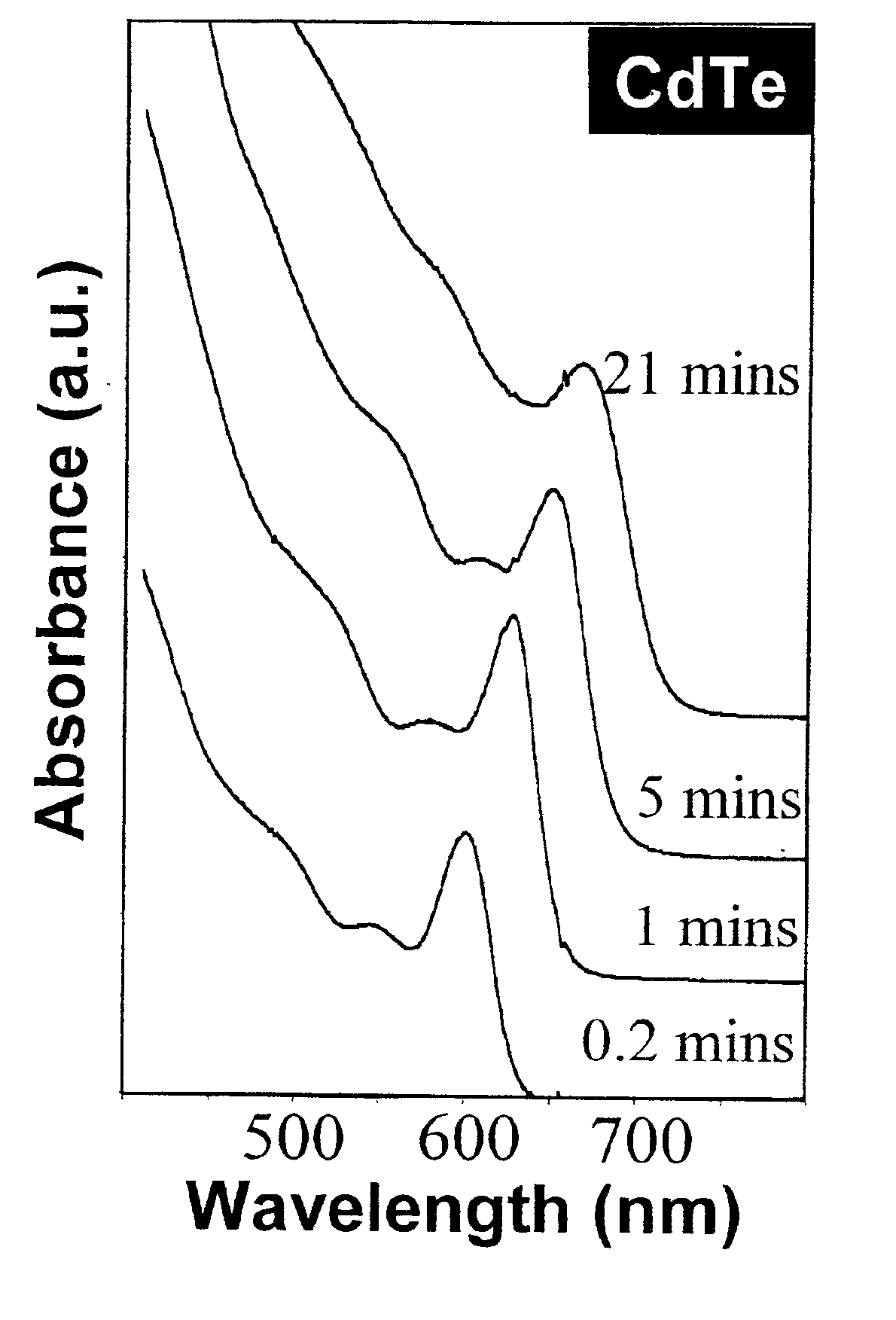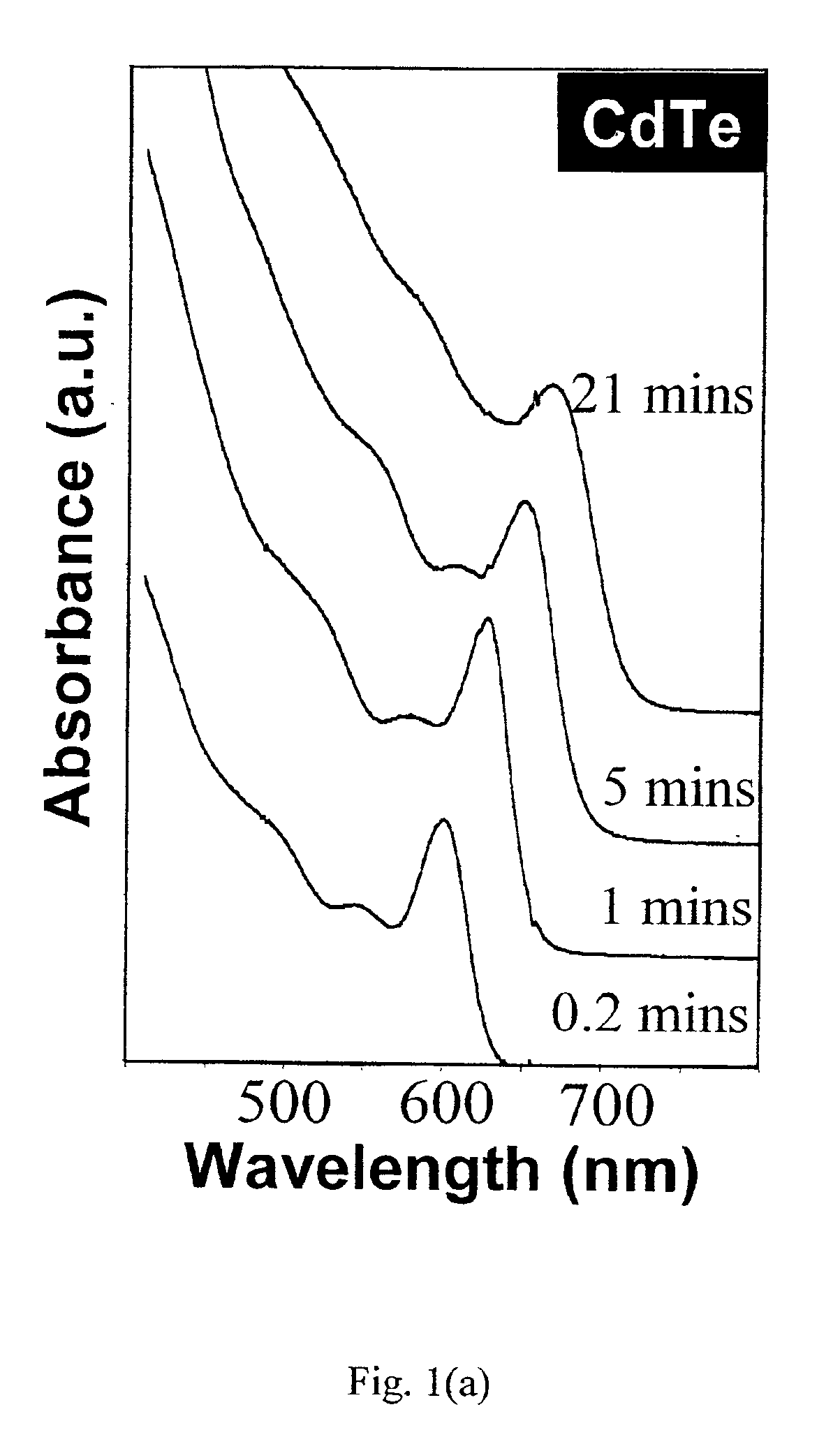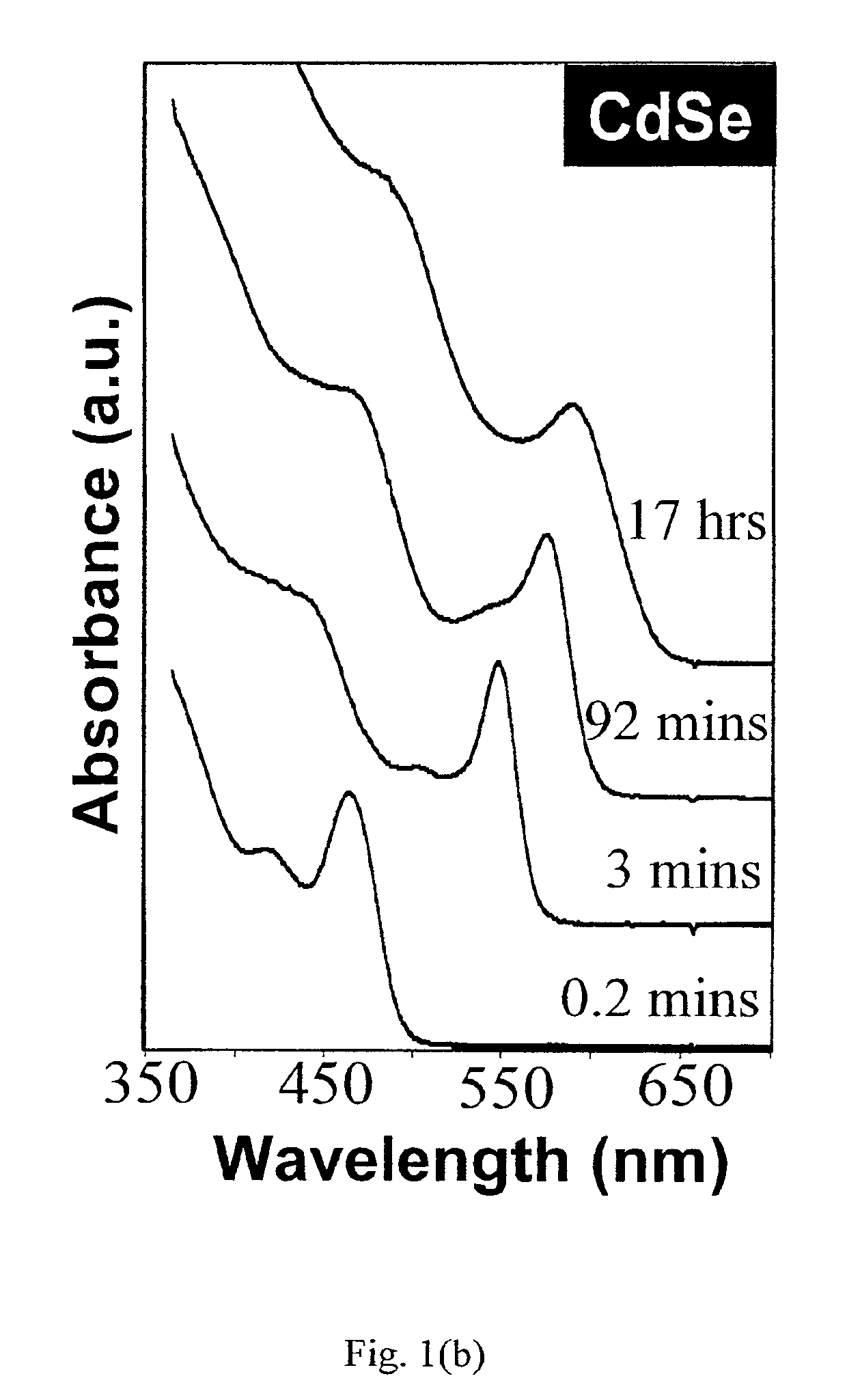Synthesis of colloidal nanocrystals
a colloidal nanocrystal and nanocrystal technology, applied in the direction of polycrystalline material growth, crystal growth process, gel state, etc., can solve the problem that the ligand cannot function as a useful coordinating solvent, and achieve high crystallinity, high monodispersity, and high reproducibility
- Summary
- Abstract
- Description
- Claims
- Application Information
AI Technical Summary
Benefits of technology
Problems solved by technology
Method used
Image
Examples
example 1
CdTe Quantum Dots
CdTe quantum dots were synthesized by loading 0.0514 g (0.4 mmol) CdO, 0.2232 g (0.8 mmol) TDPA, and 3.78 g TOPO into a 25-ml flask and then heated to 300-320° C. under an Argon flow to dissolve the CdO. The mixture was maintained at 320° C. for 10 to 15 minutes in order to obtain an optically clear, colorless solution. This solution was then heated to 360° C. In a glove box, 0.0664 g Te powder was dissolved in TBP-toluene (1.8 g / 0.2 g) to obtain a solution, which was then injected into the above reaction flask at 360° C. After injection, the nanocrystals grew at 250° C. Nanocrystal growth was monitored by removing aliquots for UV-Vis measurements. After the nanocrystals reached the desired size, the heating mantle was removed quickly and the reaction solvent was cooled down to stop the reaction. After the temperature of the solution was below 80° C., the nanocrystals were precipitated from the reaction mixture by adding approximately 10 ml methanol. The nanocrystal...
example 2
CdTe Quantum Rods
CdTe quantum rods were synthesized by dissolving 0.1542 g (1.2 mmol) CdO in 0.6696 g (2.4 mmol) TDPA mixed with 3.55 g TOPO at 300° C. The optically clear solution was then heated to 360° C. Next, 0.2 g Te powder was dissolved in 1.8 g TBP, injected into the reaction flask at 360° C., and subsequently cooled to 250° C. to allow the quantum rods to grow. The reaction was monitored by UV-Vis spectra and then characterized by photo-luminescence spectra and TEM. After reaching the desired size, the heating mantle was removed quickly and the reaction solvent was cooled down to stop the reaction. After the temperature of the solution was below 80° C., the nanocrystals were precipitated from the reaction mixture by adding approximately 10 ml methanol. The nanocrystal precipitate was separated by centrifugation and decantation. Nanocrystals were either stored as precipitate or dried in a vacuum (see the quantum rods TEM picture in FIG. 3(b) as one sample).
example 3
Synthesis of CdSe Nanocrystals in CdO / TDPA / TOPO System
Initially, 0.0899 g (0.7 mmol) CdO, 0.4010 g (1.4 mmol) TDPA, and 3.78 g TOPO were loaded into a 25-mil flask and then heated to 300-320° C. under an Argon flow to dissolve the CdO. The mixture was maintained at 320° C. for 10 to 15 minutes in order to obtain an optically clear, colorless solution. This solution was then heated to 360° C. In a glove box, 0.0719 g (0.91 mmol) Se powder was dissolved in 2 g TBP to obtain a solution. This solution was then injected into the above reaction flask at 360° C. After injection, the temperature of the reaction solution was quickly cooled down to 250° C. for nanocrystals growth. Aliquots were used to monitor the reaction by UV-Vis measurement. After reaching the desired size, the heating mantle was removed quickly and the reaction solvent was cooled down to stop the reaction. When the temperature of the solution was below 80° C., the nanocrystals were precipitated from the reaction mixture ...
PUM
 Login to View More
Login to View More Abstract
Description
Claims
Application Information
 Login to View More
Login to View More - R&D
- Intellectual Property
- Life Sciences
- Materials
- Tech Scout
- Unparalleled Data Quality
- Higher Quality Content
- 60% Fewer Hallucinations
Browse by: Latest US Patents, China's latest patents, Technical Efficacy Thesaurus, Application Domain, Technology Topic, Popular Technical Reports.
© 2025 PatSnap. All rights reserved.Legal|Privacy policy|Modern Slavery Act Transparency Statement|Sitemap|About US| Contact US: help@patsnap.com



